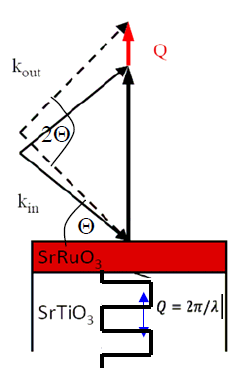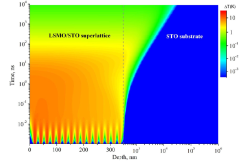Öffnet in neuem Fenster
Opens in a new window
Öffnet externe Seite
Opens an external site
Öffnet externe Seite in neuem Fenster
Opens an external site in a new window
Joint Research Group Ultrafast Dynamics
Projects
Our research focuses on coherent and incoherent dynamics of the crystal lattice. By using nanostructured samples we generate and control specific excitations, that are probed by Ultrafast X-Ray Diffraction (UXRD). Typical experiments are studies of heat dynamics on the nanoscale, the generation of quasi-monochromatic phonon wavepackets and nonlinear propagation effects of coherent phonons. In future, we plan to extend our research activities towards low temperatures. This will enable us to study phase transitions in complex materials. Our research has lead to various potential technological applications, e.g. the switching of hard x-rays on picosecond timescales.
Ultrafast manipulation of hard x-rays
Ultrafast manipulation of hard x-rays
The controlled excitation of strain waves in a sample has lead to the design of devices that directly modulate the intensity of an impinging x-ray pulse. An example is the so-called PicoSwitch: a photo-acoustic gate for hard x-rays, that allows to shorten a synchrotron pulse down to few picoseconds.
Coherent Phonon Dynamics
Coherent Phonon Dynamics
Our technique allows for generati quasi-monochromatic strain waves and monitor the propagation and decay in a substrate. In particular, we can select specific wavevectors of the generated phonons in a wide range, due to the large reciprocal-space vector accessible by hard x-rays. UXRD allows monitoring anharmonic phonon-phonon interactions and nonlinear propagation effects, e.g. the generation of harmonics of a propagating phonon.
Nanoscale Heat Diffusion
Nanoscale Heat Diffusion
Understanding heat transport on the nanoscale is a major topic for the functioning of nanostructured electronic devices. This is especially true for nanostructured devices, where the artificial superstructure and interface effects can strongly influence the thermal properties. We demonstrate how heat transport is mapped by UXRD experiments.




